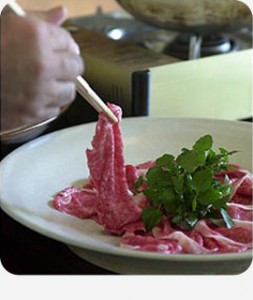
Why Wagyu?
Wagyu facts:
- [wa-gyū]wa means Japanese, and gyū means cattle, or simply “Japanese cattle”.
- Wagyu is classified into four breeds – Japanese Black, Japanese Brown, Japanese Poll, and Japanese Shorthorn.
- Wagyu is genetically predisposed to intense marbling and to producing a high percentage of oleaginous unsaturated fat.
- Wagyu cattle's genetic predisposition yields a beef that contains a higher percentage of omega-3 and omega-6 fatty acids than typical beef. The increased marbling also increases the ratio of monounsaturated fats to saturated fats meaning Wagyu is healthier to eat than other cattle breeds.
- The Australian Wagyu Association is the largest breed association outside Japan.
- The Wagyu cow herd in Japan today number numbers around 750,000 black and 85,000 red. Their cattle breeding numbers are declining due to an aging population of farmers.
- Realising the value of their unique product, the Japanese Government banned the export of Wagyu and declared them a national treasure. However in 1976, four bulls were mysteriously exported to the United States and Wagyu were graded up from the US cow herds. With recent imports from Japan, Australian Wagyu bloodlines now are amongst the best in the world.
- Both fullblood and Wagyu-cross cattle are farmed in Australia for domestic and overseas markets, including Taiwan, China, Hong Kong, Singapore, Indonesia, Vietnam, the U.K., France, Germany, Denmark and the U.S.
- The highest grade of beef (prime beef) under the USDA grading system needs to have 6-8 percent of marbled fat. In comparison, top quality wagyu boasts 20-25 percent marbled fat.

